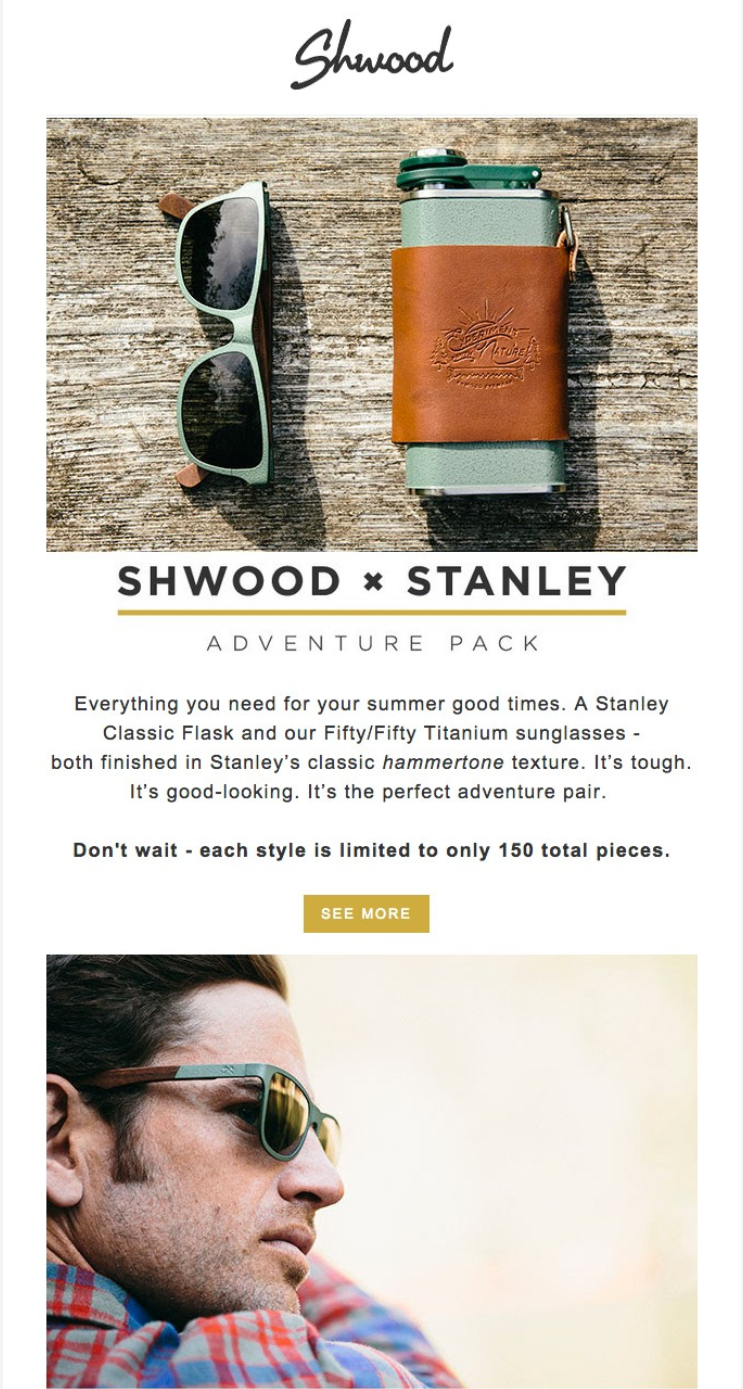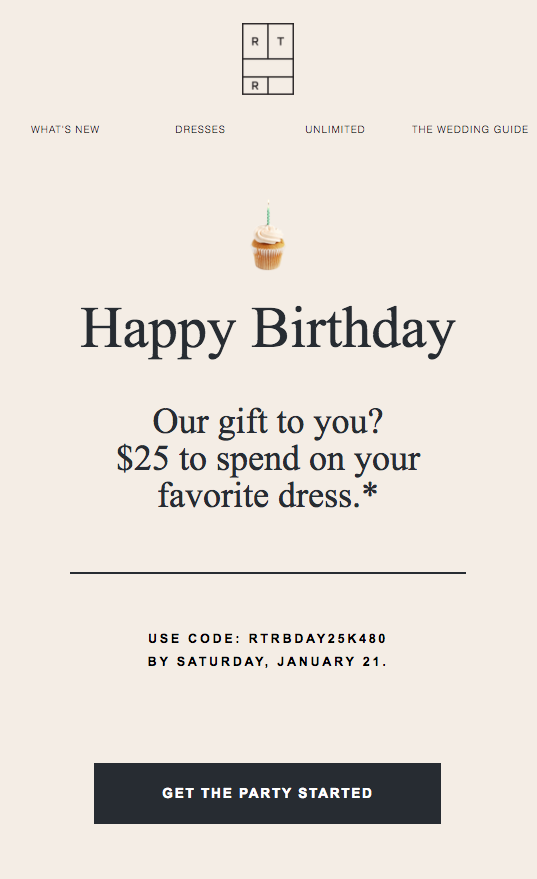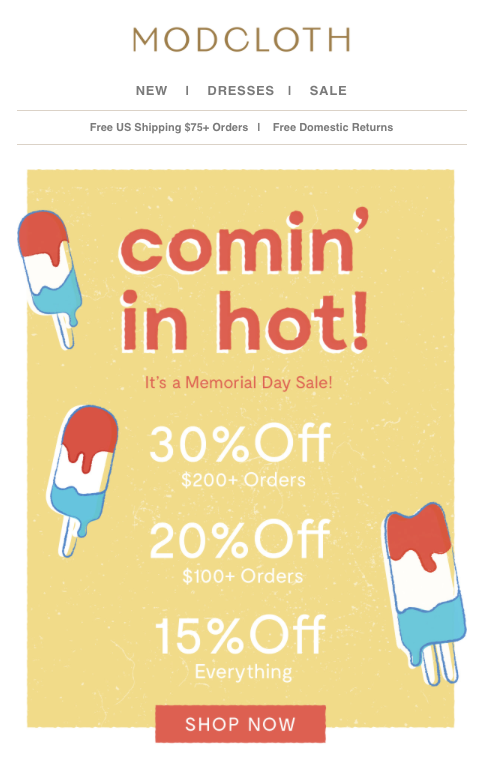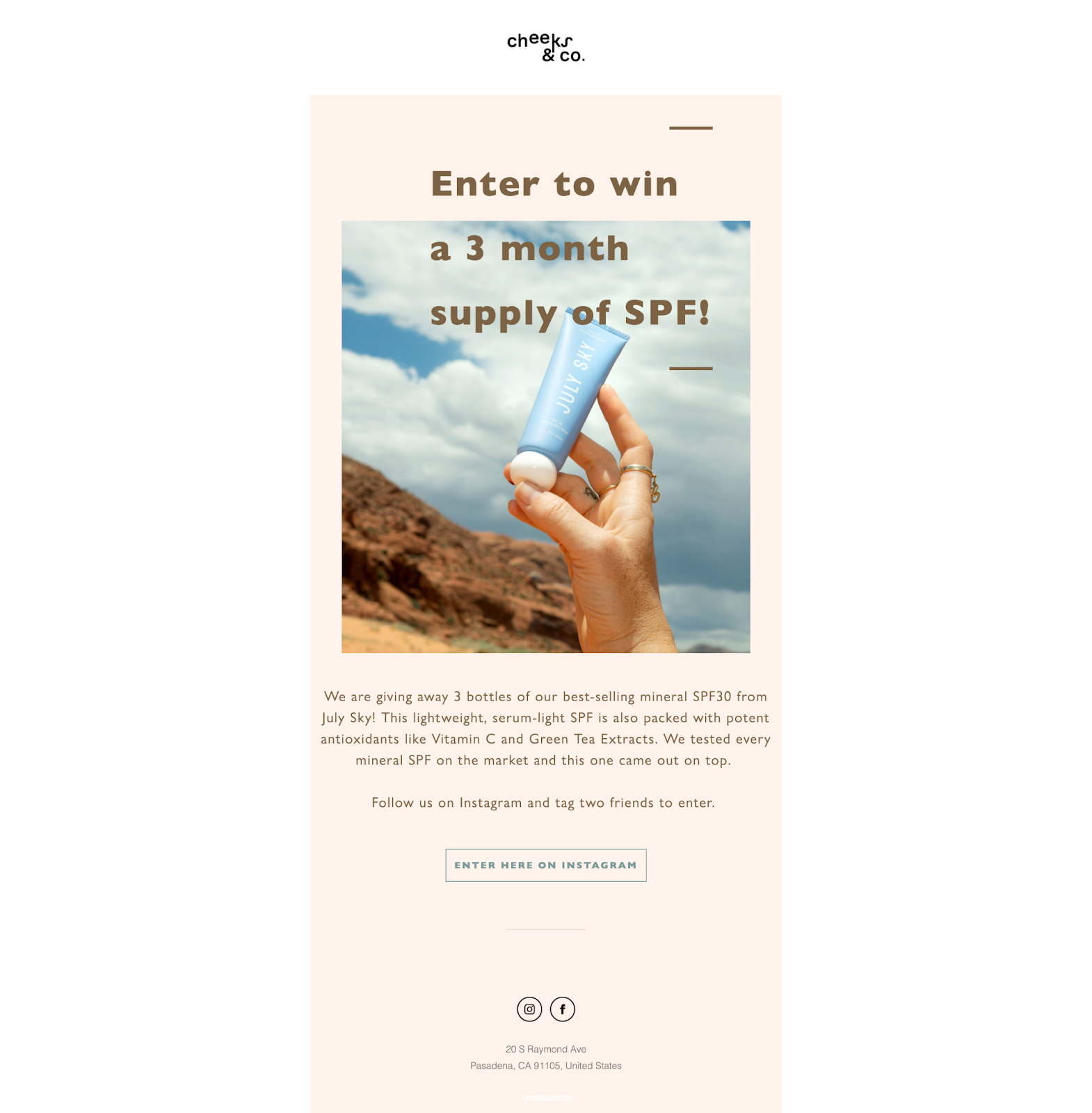How to use targeted email marketing to boost conversion rates
Table of Contents Jump to:
Jump to:
Table of contents
We are continually being bombarded with marketing messages. People send over 300 billion emails every day, so it’s no wonder it can feel overwhelming.
If you want to stand out from the masses, you need to create emails for your subscribers that speak directly to their interests, problems, aspirations, wants, and needs. This is where targeted email marketing comes in handy.
Targeted email marketing helps you use emails to address the specific goals or pain points of your audience segments to improve retention, drive conversions, and ultimately generate more revenue.
In this article, we’ll look at what targeted email marketing is, the benefits it can bring to your business, and how to build a successful targeted email marketing campaign in five simple steps.
What is targeted email marketing?
Targeted email marketing involves sending personalized and relevant marketing communication to your subscribers based on their interests, problems, aspirations, wants, needs, and specific goals.
With relevant data, including demographic information and buying behavior, provided by your SMB email marketing tool, you can segment or group your subscribers by their characteristics and preferences. This allows you to send targeted communications according to their subscribers segments rather than sending everything to everybody.
Deliver tailored email experiences
Segment your audience, personalize messages, and design emails your subscribers will love with Flodesk.

The benefits of targeted email campaigns
91% of customers prefer to shop from brands that follow a personalized approach and share thoughtful offers and recommendations to them. By sending targeted email campaigns, you increase the chances of turning subscribers into loyal customers.
Creating a targeted email campaign has several benefits:
- Increased relevance: Share content that is specific and relevant to your subscribers’ interests, behavior, or demographics. If the content resonates with the recipient, it increases the chances of them engaging with your email and brand.
- Improved engagement: By sending targeted content, you increase the likelihood of your subscribers opening your email, clicking on your call to action, and eventually converting.
- Reduced unsubscribe rates: As per a survey conducted in the UK, about 39% of consumers tend to unsubscribe when the email communication they receive from a brand is no longer relevant to them. That’s why you must adopt a more personalized approach when sending marketing emails—dig into what your subscribers really care about.
- Better subscriber relationship: By showing that you know and understand your audience’s needs and preferences, you’re more likely to build a stronger, longer-lasting relationship with them. This can lead to higher customer loyalty and increased customer lifetime value.
- Increased sales and ROI: Marketers who have noted as much as a 760% increase in revenue as a result of segmented email campaigns. Tailor your emails to each of your subscriber segments to drive more conversions and sales. This can eventually lead to a higher return on investment for your email marketing efforts.
- More accurate analysis and optimization: With targeted email campaigns, you can more accurately measure what works and what doesn’t for specific audience segments. This can inform future strategies and lead to continuous optimization of your email marketing.
Remember, successful targeted email campaigns require a deep understanding of your audience and careful segmentation of your email list. It’s also important to respect privacy regulations and use personalization responsibly.
6 steps to creating targeted email marketing campaigns
We’ve covered the what and why of targeted email campaigns, so let’s dive into the details of exactly how to put a campaign together.
Step 1: Use a great email marketing tool
Email marketing is powerful. You can boost its value by using a powerful email marketing platform that makes email segmentation and personalization a breeze.
Invest in an email marketing platform that:
- Automates email sends based on subscriber behavior and other triggers
- Provides analytics about your campaign’s success
- Is super easy to use and navigate
- Has integration capabilities, allowing you to connect your email marketing efforts to your favorite business tools
- Includes a landing page and sales funnel builder, so that your email and ecommerce efforts work together seamlessly
With Flodesk, it’s easy to segment subscribers from the start with form preferences. You can also segment existing subscribers in bulk by selecting email addresses and moving them into newly defined segments. Then, use automation to send timely, hyper-personalized communications to your subscriber segments.
For example, say you want to send a personalized welcome campaign to subscribers who signed up for your targeted email list by downloading a freebie from your website.
Simply create a segment for those subscribers, then set up an automated sequence of hyper-personalized emails to send to them. Learn how.
Send a series of 3 to 5 welcome email sequences that introduce your business, provide value, and help familiarize subscribers with your brand.
As you continuously provide value through highly relevant emails, you’ll foster engaged subscribers and begin moving them deeper into your sales funnel.
Step 2: Gather your data
Investing in the right email marketing platform is only the first step. Without the relevant customer data, it’s near impossible to personalize your email marketing efforts and share targeted email content.
Start gathering subscriber data from various sources, such as social media or landing pages, and fill in any gaps as you go along.
Review the information you gained from subscribers during sign-up or in previous communications. Collect data from their customer behavior, purchasing history, or any other interaction they have had with your brand.
Flodesk makes it super simple to start segmenting your customers based on their personal preferences and information. With form preferences, you can add checkboxes to your opt-in forms to help you get clear on what customers want to hear about (and how often they want to hear about it).
Want better email marketing results?
Send the right message to the right person at the right time with Flodesk.
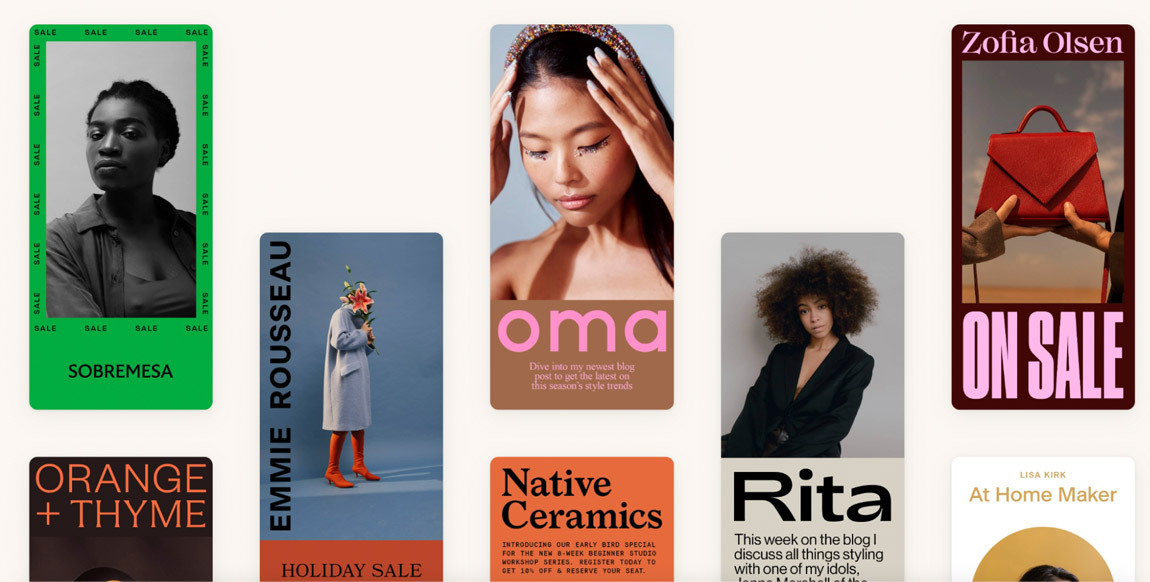
Step 3: Build your personas
Once you’ve gathered customer data, it’s time to build your customer personas. Personas are fictional characters based on your potential customers that help you understand them and their needs better.
For example, say you’re a business coach. If one segment of your target audience is women returning to the workplace after having children, you need to build a persona that describes what you know about a typical person in this segment. That information might look something like this:
Name: Rebecca
Age: 28–38
Likes/dislikes/interests: Family-focused, children’s hobbies have taken center stage, and is pressed for time
What Rebecca wants: A space to explore their next steps business-wise, practical tips on showcasing their transferable skills, and a confidence boost
Step 4: Segment your list
There are numerous ways you can create a targeted email marketing list. The more you start learning about your subscribers and building a solid relationship with them, the more you can refine this process.
Start by allowing your subscribers to select the segment they’d like to be in by listing content preferences at opt-in. This is ideal if you have multiple content focuses that cater to different segments of subscribers.
For example, you may have a targeted set of welcome sequences for working moms and a whole other set for college graduates. You can offer these target segments a choice to select the kind of content they’d like to receive from you and create different segments based on these choices.
Here’s how to set it up within Flodesk:
- Go to My Account and select Opt-in Setup
- Scroll down and select Preferences page
- Customize your preferences page and click Finish
- Within the footer of your email templates, you’ll find an option to customize the unsubscribe or preferences message
- Connect each preference to a segment to automatically segment each subscriber based on their preferences
- Similarly, you can add these custom preferences to every new opt-in form you create, allowing you to easily segment new subscribers from the start
Alternatively, you can segment subscribers based on actions, such as where they opt-in for your email list and the kinds of freebies they download.
Here are some quick ways to segment your subscribers in Flodesk:
Segmenting the most engaged and least engaged subscribers
- Go to Audience > Subscribers
- Filter using different criteria, like subscribers who are active and those whose last activity falls within the past 30 days or 60 or more days ago
- Assign appropriate segments to these subscribers—you can call them “engaged,” “disengaged,” “cold subscribers,” and more
Segmenting based on interests
You can use Flodesk workflows to segment subscribers based on actions they take and how they interact with your emails by setting up action triggers. Here’s how.
- Navigate to Workflows from the menu bar on your Flodesk dashboard
- Create a new workflow or edit an existing one
- Add a yes/no condition as an action step in your workflow (for example: when a subscriber clicks on a link)
- Place subscribers who complete (or don’t complete) the action into a segment by selecting “Add subscribers to segment(s)”
- Select your target segment, click “publish workflow,” and you’re done
To learn more about automating segmentation with workflows, visit our help center.
Step 5: Create targeted content
Once you’re done building your personas and creating segments for your subscribers, you’re ready to wow your subscribers with targeted content and guide them into your sales funnel.
Keep the focus on the needs and wants of all your segments. Make sure your email subject lines, key marketing messages, and images all align to deliver an experience that matches customer expectations.
For example, let’s say Rebecca is one of your subscribers and she’s a busy person. Your email subject lines need to show you understand that she’s time-pressured, while encouraging her to take a moment to read your content.
You might try something that piques curiosity like, “Remember to put your own oxygen mask on first…”
To learn more about how to encourage people to open your emails, read How to Get People to Open Your Emails.
Here are some best practices to consider when sending targeted email content:
- Always factor in what stage of the customer lifecycle they’re in to ensure you’re sending the right message at the right time
- Create a fool-proof marketing strategy to ensure your brand remains top of mind with prospects
- Avoid spamming your subscribers—more emails do not imply faster conversion
- Avoid click bait-y subject lines—even when you’re striving for their attention, keep it real
- Try to win subscriber loyalty by offering value instead of jumping directly into selling
- Make it convenient for them to unsubscribe if they want to; don’t make them struggle to find the unsubscribe button
- Design templates to save time and create emails on the go. Make sure you have enough templates for each customer persona and segment you have in your email list
Pssst: Here are some examples of eCommerce email templates for some extra inspiration, plus eCommerce marketing strategies you can start applying to scale your business.
Unleash the power of targeted emails
Send stunning, hyper-personalized emails people love to get with Flodesk.
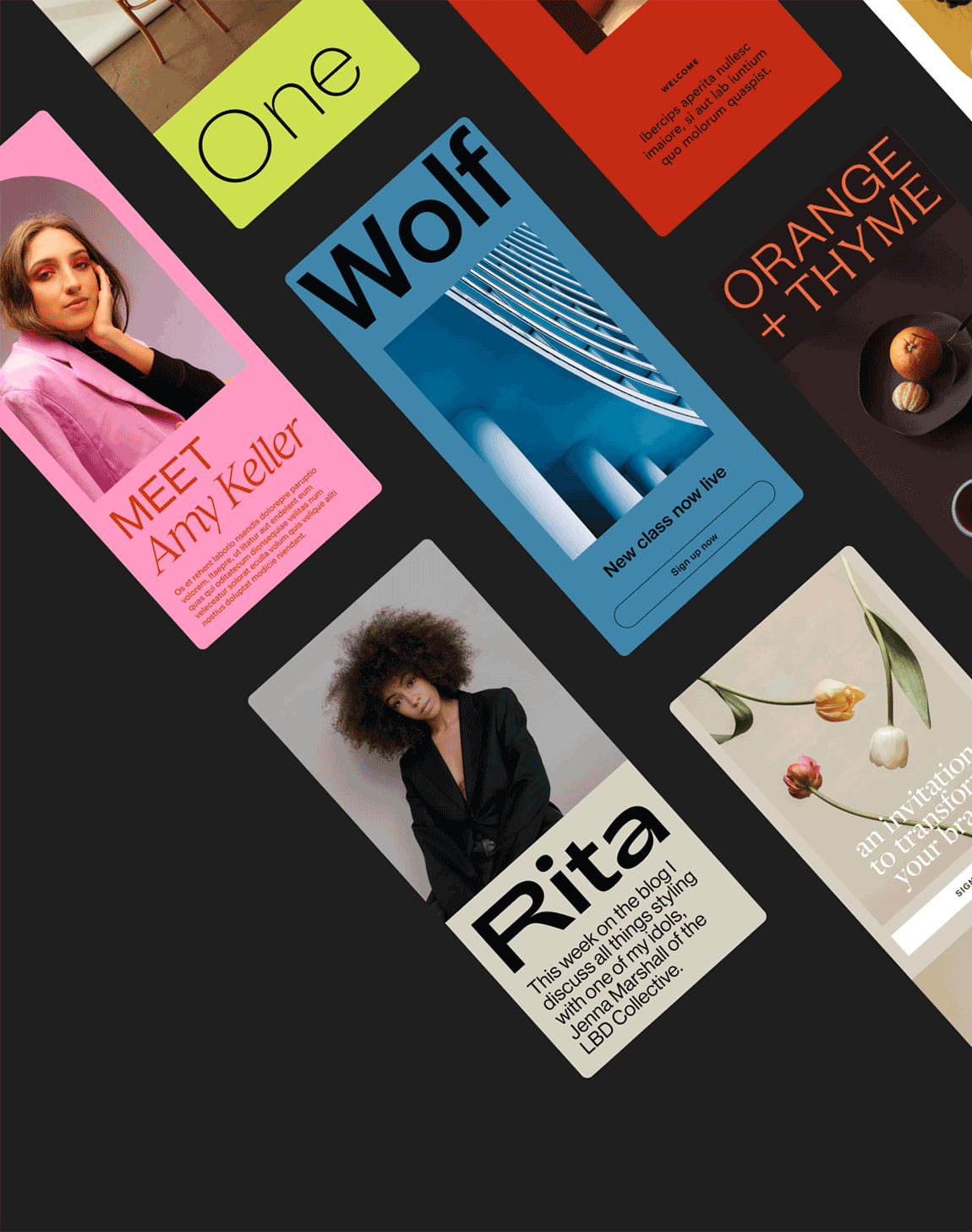
Step 6: Test and adjust
Targeted email marketing is only perfect if it’s actually driving conversion. Once your campaign is up and running, it’s essential to check your data and see if it’s actually moving the needle closer to your goals. By measuring core email marketing metrics, such as click-through rates, you can see whether your targeted emails are making a difference. And, if they’re not, you can make adjustments and try something new.
6 types of targeted emails to boost conversions
It’s clear that personalizing your email marketing is essential for boosting conversion. But how should you segment your subscribers so you can make sure you’re sending them the most relevant content?
Let’s look at six different types of email targeting you can use to boost sales.
1. Targeted emails based on behavior
These are emails that are triggered by people either taking or failing to take a specific action. A classic behavior-targeted email is a cart abandonment email—the one a customer gets when they don’t complete an online purchase, leaving items in their shopping basket.
These emails encourage potential customers to come back to complete the sale and are very effective. Nearly 20% of abandoned cart emails result in a sale.
But cart abandonment emails are only one example of behavior-targeted emails; you can trigger emails by other behaviors like email opens or link clicks. For example, you can trigger emails to only send whenever someone opens a previous email in the email sequence.
To learn more about optimizing your emails through personalization, read 3 Tips to Connect with Your Audience in Emails.
2. Targeted emails based on demography
A common way to target subscribers is by using demographic data. You can target several attributes in this way, but the most common are gender and age. Clothing and accessory brands often use gender-specific emails to increase engagement. Companies associated with specific life stages, such as a children’s boutique or family photographer, often use emails targeting each age group.
Demography-based targeting is essential for building a personalized and trusted relationship with subscribers. But it’s important to do your research and clearly segment customers based on confirmed profile data. If you miss the mark with this type of targeting, you can put people off from purchasing, or worse—damage the relationship.
Here’s a great example of how eyewear retailer Shwood uses demographics to appeal to men in their subscriber base.
3. The “inactive subscriber” targeted email
When people initially sign up for your email list, they might open all the relevant messages you send, click links, and share your emails with their friends. But over time, that engagement level may drop off until you realize they haven’t engaged with the emails you’ve sent over the last few months.
First, figure out why that’s happening. Perhaps something has changed that made your product or service no longer relevant to them, or maybe they’ve forgotten why your product was valuable to them in the first place.
It can be any number of reasons, but a targeted email reminding them of the benefits or tempting them back with a promotion or discount could be just the thing to help re-engage them and secure a sale. Learn how to write a re-engagement email to get them to re-engage with you.
And, if they’re still not biting, it gives you a chance to clean your email list and target your marketing efforts toward engaged subscribers.
Here’s how hair extension retailer Hair For the Girls uses a time-restricted discount to tempt inactive subscribers in a re-engagement email:
4. Time-based targeted emails
Time-based targeted emails are triggered on certain dates or after a specific time period. Classic examples would include a birthday discount code, seasonal promotion, or a reminder to repurchase a consumable product.
Your subscribers are likely busy people, and the prompt to repurchase dog treats every three months could be just what’s needed to make a purchase. Targeted emails like holiday offers and birthday promotions tick several boxes. They’re personalized, which customers appreciate, and they often contain a discount or birthday gift that makes the recipient feel special, which may encourage a purchase. These emails are worth the effort—birthday emails generate 342% more revenue than other promotional emails.
This is an excellent example from the eCommerce platform Rent the Runway:
5. Targeted emails based on subscriber type
It’s important to create targeted email marketing campaigns based on subscriber type, like whether your subscribers are new or existing customers. Say you’re sending out an email offering a promotion for a Memorial Day sale. You might offer new customers $10 off their first purchase of any amount.
For existing customers, whom you know trust you enough to make larger purchases, you might offer $20 off purchases over $100. Understanding your subscribers and their relationship level with you is vital if you’re going to get the most benefit from your campaigns.
For example, in their Memorial Day promotion, online fashion retailer ModCloth offered a tiered discount system. 15% off everything site-wide to appeal to new customers, rising to 30% off orders over $200.
6. Targeted emails based on custom parameters
There might be occasions when you want to send a promotional email based on custom parameters we haven’t touched on previously. For example, say you’re an international eCommerce business. You might develop products that are only available in certain countries, and so you launch an email campaign to subscribers based in those particular locations alone.
To learn more about starting your own eCommerce business as a side hustle, read: How to start a side hustle eCommerce business.
The same might be true with seasonal products. For example, deciding when to run a beachwear discount promotion might be different for clients in Australia (whose winter runs from June to August) versus the UK (whose winter runs from December to February). For instance, here’s how the day spa Cheeks & Co., based in sunny California, targets its local Pasadena market with a location-relevant giveaway campaign:
Treat every subscriber as the unique individual they are
We all like to feel special. Targeting your email marketing to match the needs of your subscriber list can help you build better relationships and retain more customers.
As the fastest-growing email marketing company, Flodesk makes sending targeted, beautiful emails easy to do. Combining design with simplicity, Flodesk helps small business owners grow their email lists and create emails people love to get.
Our curated email template gallery and stunning form templates make it easy for members to quickly customize their emails and forms for different segments, elevating their brand for maximum engagement and conversion.
We offer you unlimited sends, subscribers, segments, automations, and more for a flat fee of $38/month—forever. You’ll never be penalized for successfully growing your business again.

